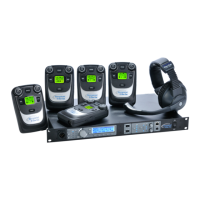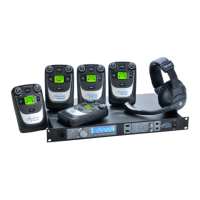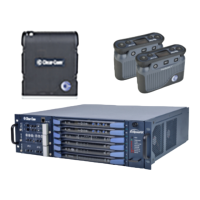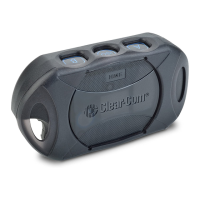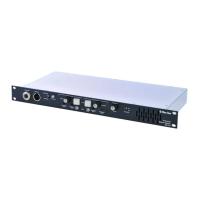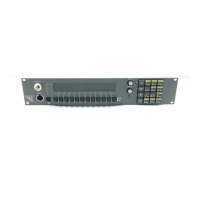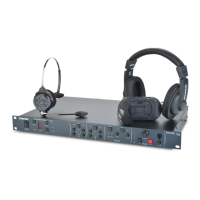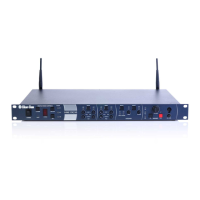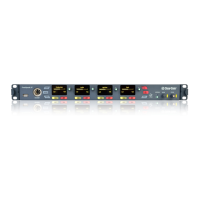69 Tempest®2400 2-Channel Wireless Intercom System
Coverage Planning
Placing your antennas for Tempest Seamless Roaming follows the same basic rules of any mul-BaseStaon Tempest
wireless system with one excepon. The antennas do not need to be located in the same physical locaon. For example,
let’s look at a two BaseStaon system ulizing two Remote Transceivers:
A venue has two large rooms separated by a hallway. Each room needs Tempest coverage and the ability for users to work
and move freely from room to room. Note: Up to 11 BaseStaons can be ulized with Seamless Roaming providing 11 overlapping
coverage areas.
Implementaon
BaseStaon Conguraon
• Verify ALL the BaseStaons in the system conguraon are properly connected to the same ZSync source, and
assure that source is receiving power. See the ZSync secon of this manual for more informaon on ZSync
technology.
• Verify ALL BaseStaons have Network Numbers within the same Network Number group (i.e. 0,1,2,3...10 or 11, 12,
13, 14...20.) See the secon on Network Number groups in this manual for more informaon.
• Verify ALL BaseStaons in a Roaming Group are set with the same Lockout Key
• Verify ALL BaseStaons in a Roaming Group are operang in the same operaonal mode: Normal, Shared or Split.
• Verify ALL BaseStaons have the same audio sources across all used channels (if desired); if the BaseStaons are not
connected to an external hard wired system, assure that one BaseStaon is in Master Mode. See the Master Mode
secon of this manual for more informaon.
BeltStaon Conguraon
• Using a pairing cable, pair all BeltStaons to each BaseStaon they are intended to roam with.
• Set up each BeltStaons Roaming Group (up to 16 BaseStaons may be selected per BeltStaon)
• Enable Roaming on each BeltStaon; when roaming is not enabled, a BeltStaon will operate as normal on a single
BaseStaon.
• Adjust Roaming Bias seng (if needed). See the secon on BeltStaon Setup in this manual for more informaon
on adjusng Roaming Bias in Seamless Roaming.
Placing one BaseStaon’s Remote Transceiver in the center
of one room, and placing the second BaseStaon’s Remote
Transceiver in the center of the other room will provide
coverage for both of those spaces.
By adjusng the locaon of the two Remote Transceivers
closer to one another, the area of overlapping coverage can
be increased. In this case, providing beer coverage for the
hallway in between the two rooms.
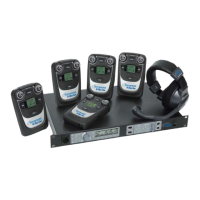
